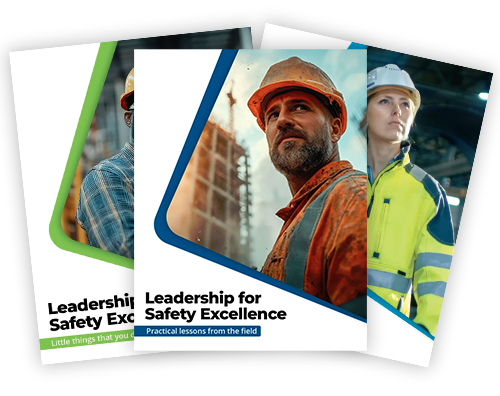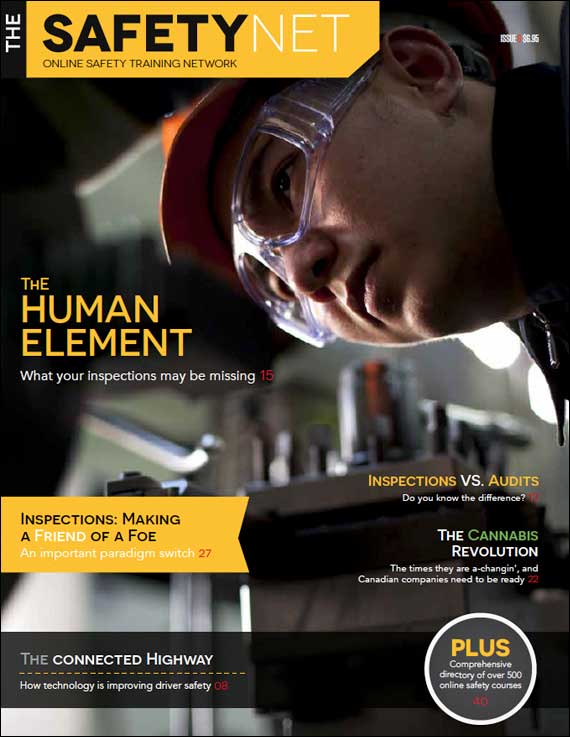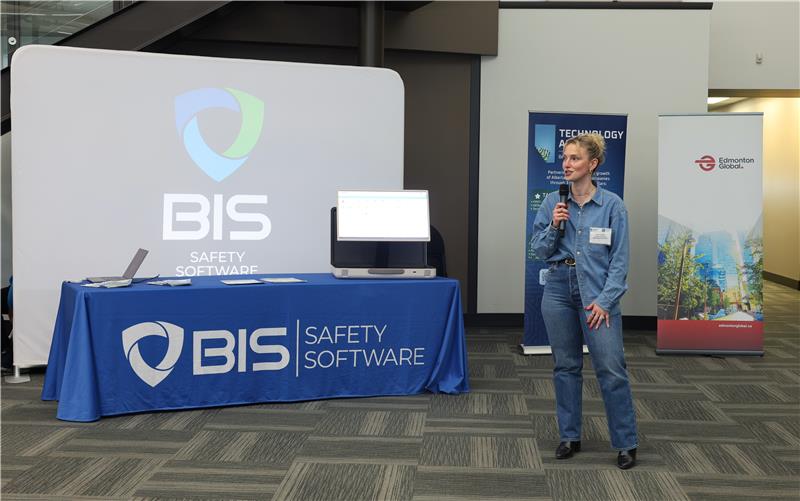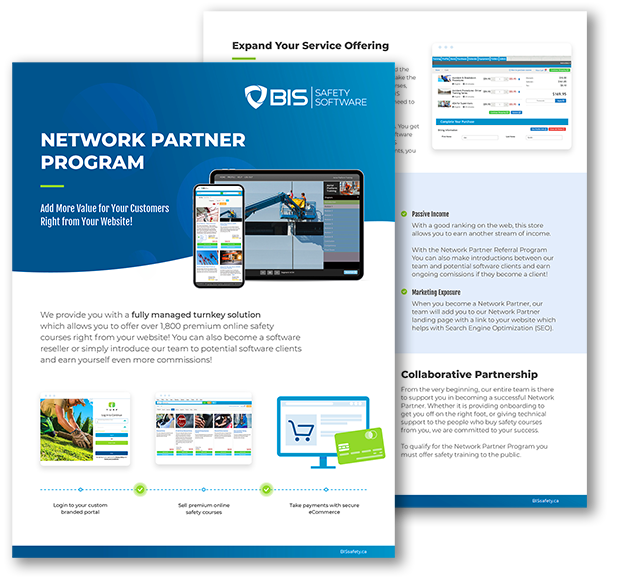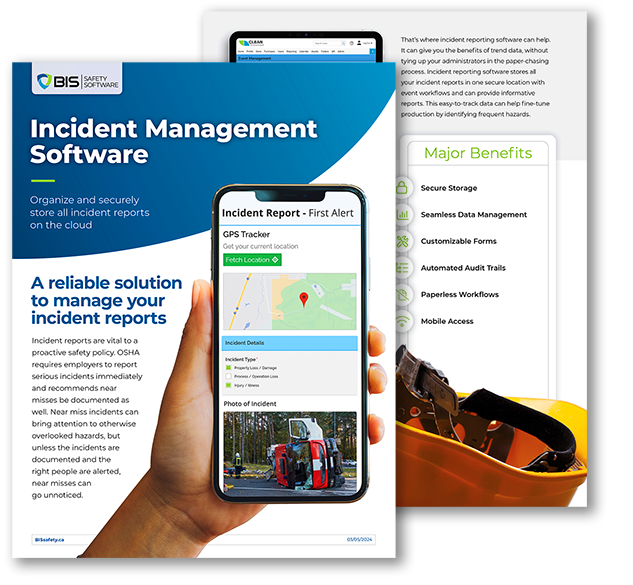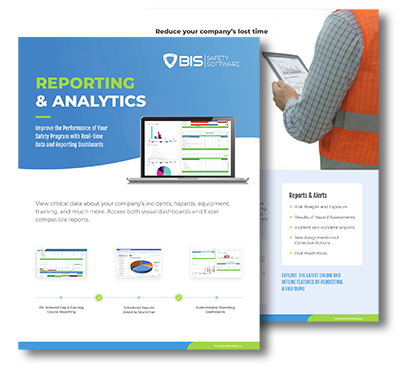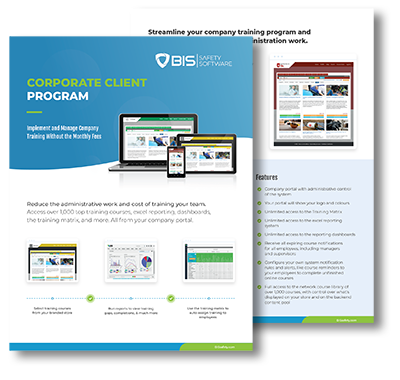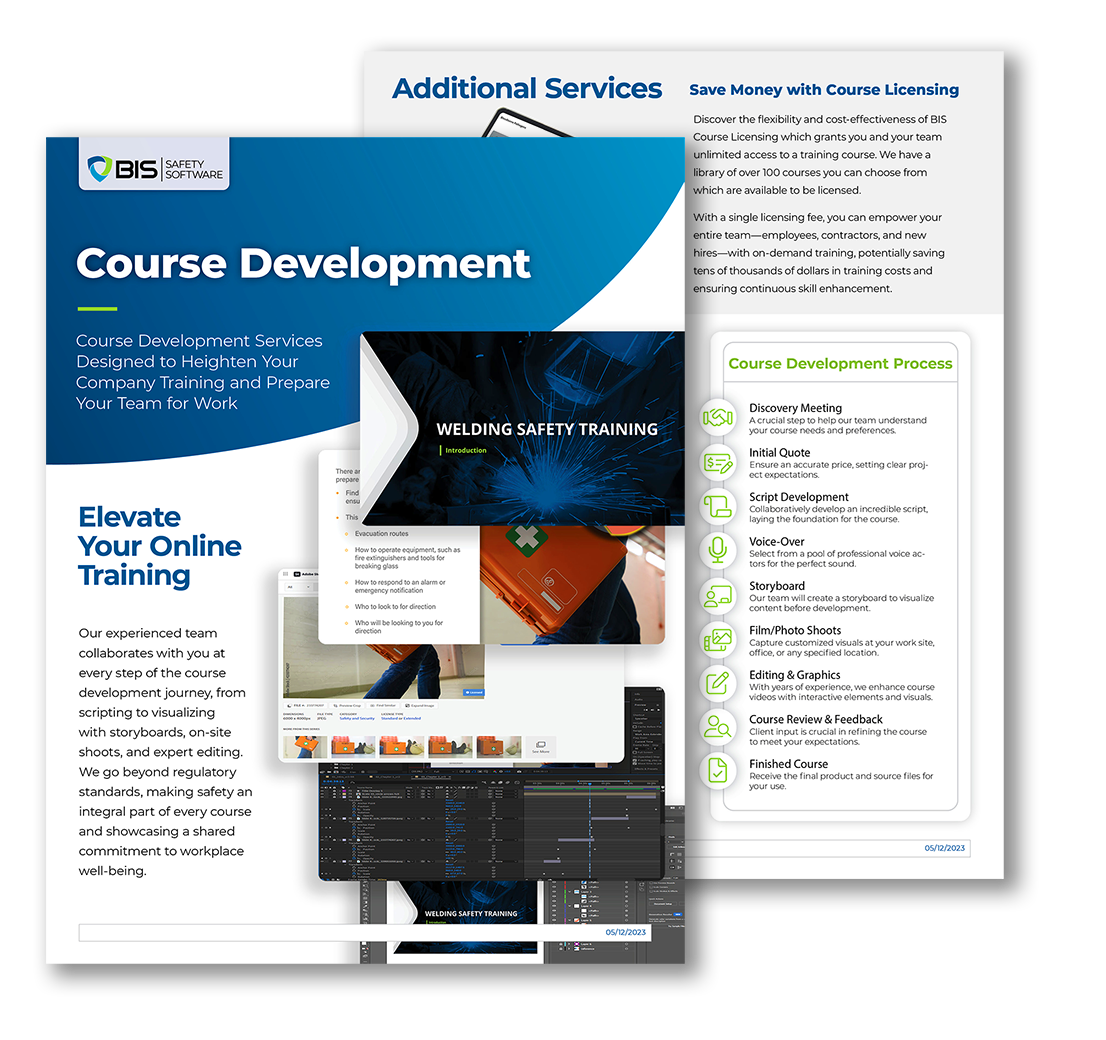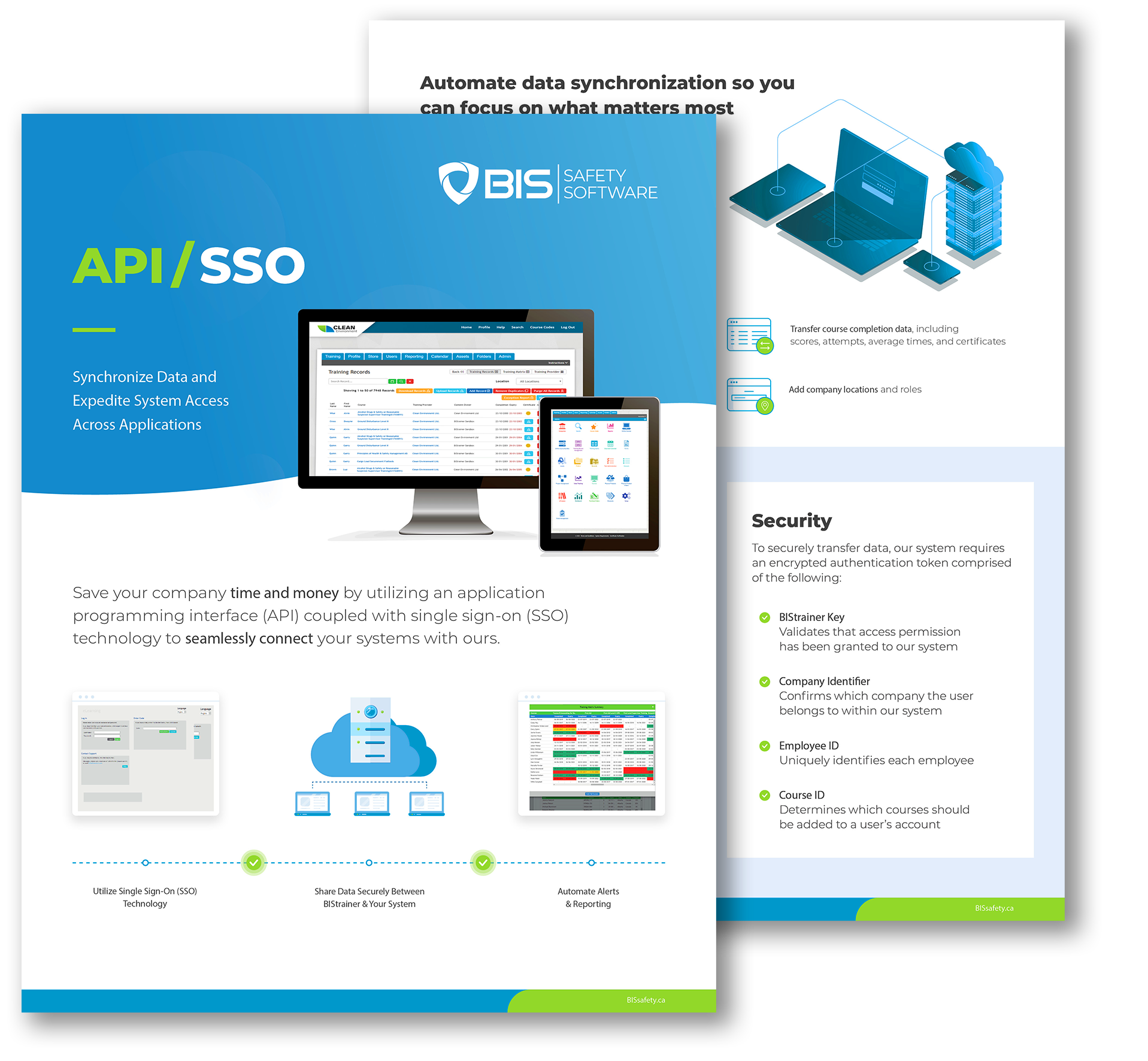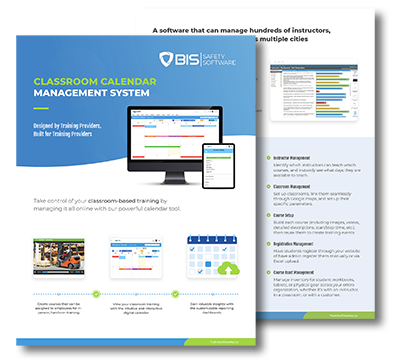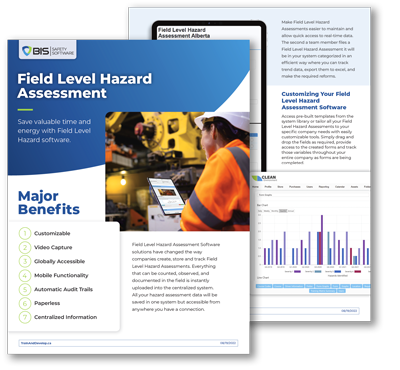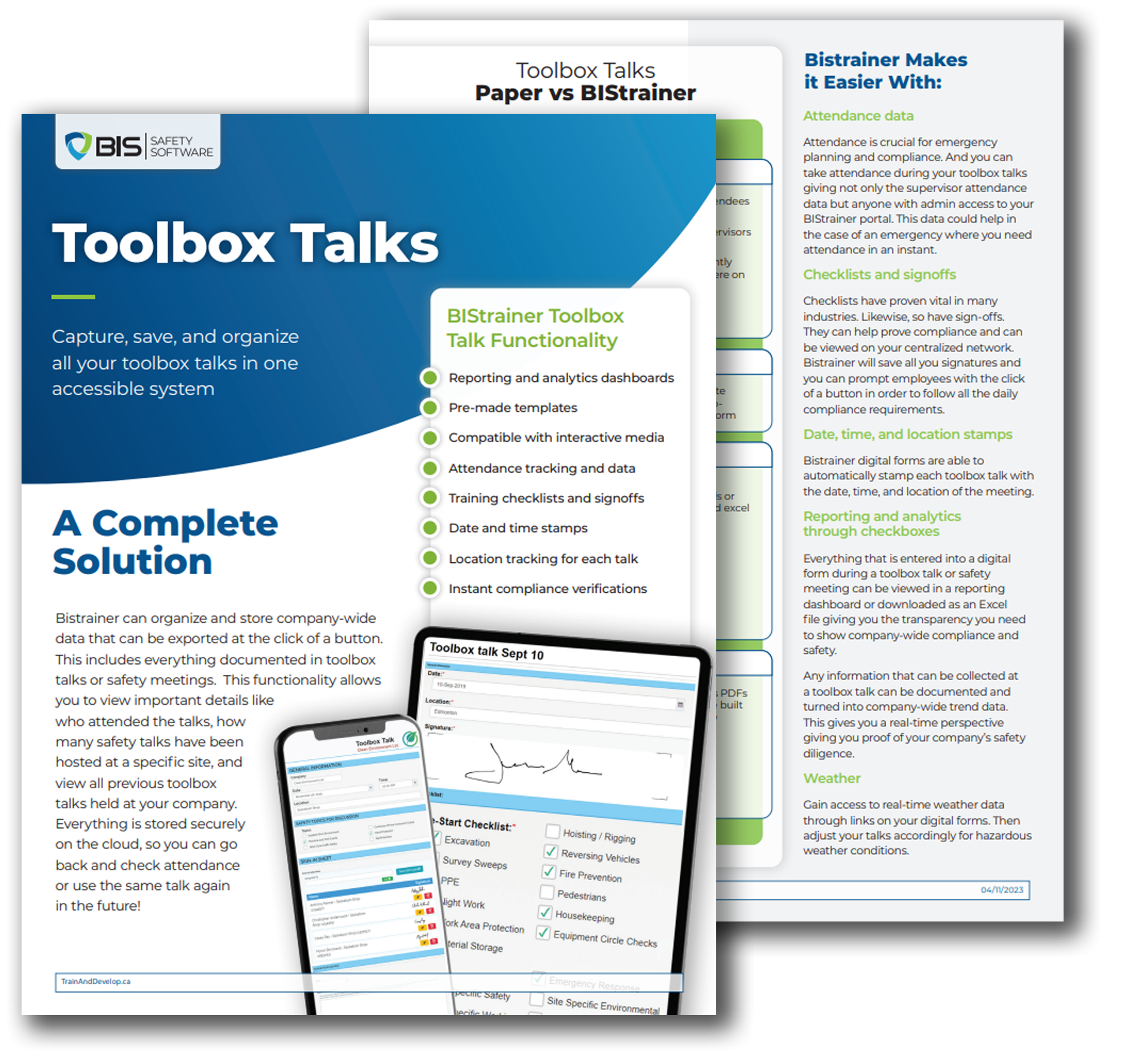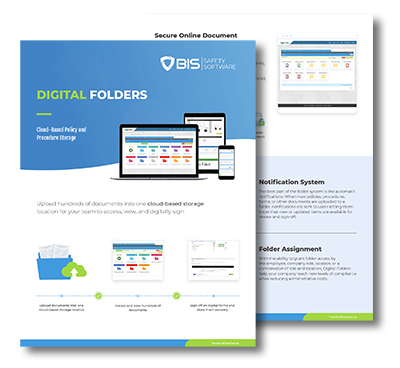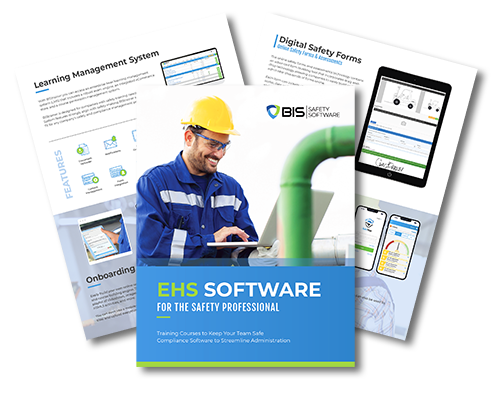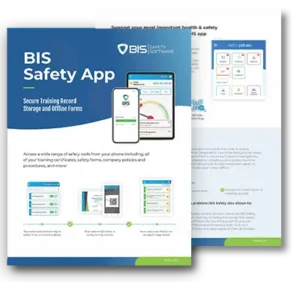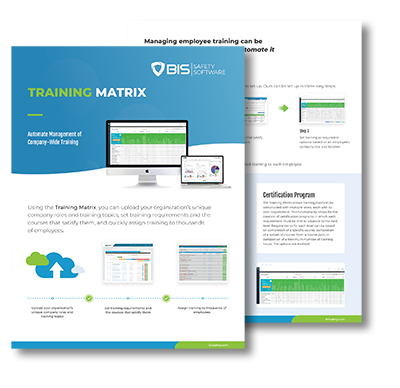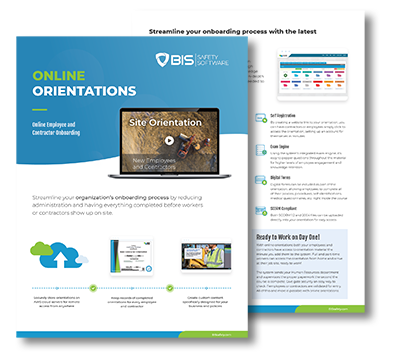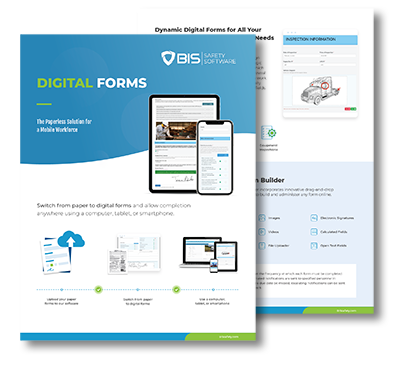Comprehensive Guide to EHS Risk Management Software
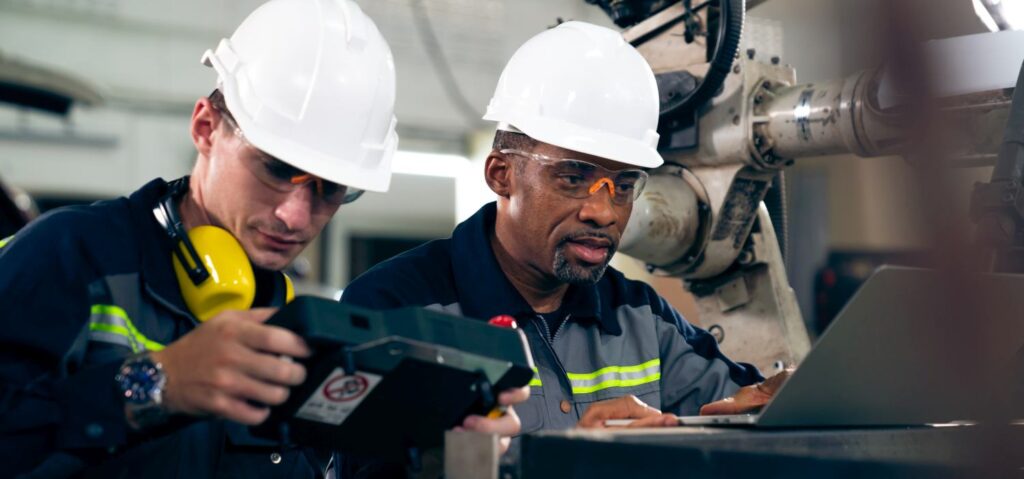
This guide helps you choose the best EHS risk management software by covering features, vendor selection, implementation strategy, and long-term success tips.
Enhancing Lone Worker Safety

Lone workers face serious safety risks. This guide explores key features of lone worker apps, implementation strategies, and real-world success stories for safety teams.
Would You Pass a Surprise Safety Inspection?

Home Blog Would You Pass a Surprise Safety Inspection? Here’s What Inspectors Look For By RDadiz Facebook LinkedIn A safety inspection can happen anytime. No warnings, no time to prepare, just an inspector walking in, clipboard in hand. The good news? A workplace that stays ready doesn’t have to worry. When safety is a daily habit, inspections become an opportunity to show what you’re doing right, not a scramble to fix what’s wrong. The best workplaces don’t just pass inspections, they set the standard for others to follow. A strong safety culture isn’t about passing tests. It’s about keeping workers safe, every shift, every day. What Do Inspectors Check First? Housekeeping – A clean, organized workspace shows a commitment to safety. Inspectors check for clear walkways, properly stored materials, and unobstructed exits. Clutter signals carelessness. A well-kept site reduces accidents and keeps workers focused. PPE Compliance – Workers should be using the right gear for the job. Hard hats, gloves, eye protection, whatever’s required. Proper PPE use signals a culture that values protection, not just policy. Machine Guards and Lockout/Tagout – Equipment must be well-maintained. No missing guards. No bypassed safety switches. Inspectors look for proper lockout/tagout procedures to ensure workers aren’t exposed to deadly risks. Emergency Exits and Equipment – Fire extinguishers, eyewash stations, exit signs, all must be accessible and in working order. In an emergency, workers shouldn’t waste time searching for life-saving tools. Training Records – A well-trained team is a safe team. Inspectors look for up-to date documentation proving workers know safety protocols. If your crew can’t answer basic safety questions, you have a problem. Hazard Communication – Chemicals must be labeled and stored correctly. SDS sheets should be easy to find. A missing label or improper storage isn’t just a violation, it’s a potential disaster. How to Stay Inspection-Ready Treat Every Day Like Inspection Day- Good safety habits should be second nature. If you wouldn’t want an inspector to see it, it shouldn’t happen in the first place. Fix Small Issues Before They Become Big Ones- A quick cleanup or repair today prevents larger problems tomorrow. A loose wire, a missing guard, a blocked exit, minor now, major later. Keep Training Up to Date – A knowledgeable team makes a safer workplace. Safety refreshers shouldn’t be a once-a-year event. Train often. Reinforce daily. Make PPE a Standard, Not a Suggestion- Workers should have what they need to stay protected. No gear, no work. Simple as that. Conduct Internal Audits- Regular self-checks reinforce a strong safety culture. Walk the site. Spot hazards. Fix them before an inspector has to point them out. Encourage Worker Feedback – The people on the floor know where the real risks are. If workers see a problem, they should feel safe speaking up without fear of backlash. Lead by Example – If supervisors cut corners, workers will too. Safety starts at the top. Set the standard. Final Thought: Stay Ready, Stay Safe A workplace that prioritizes safety every day never has to “get ready” for an inspection. It’s already there. Safety isn’t just about compliance, it’s about creating a workplace where everyone feels protected, prepared, and proud of the job they do. When safety is built into the routine, inspections become a chance to showcase success, not scramble to fix mistakes. Strong safety programs get recognized, and workplaces that take safety seriously earn trust from workers, clients, and inspectors alike. The goal isn’t just to pass an inspection, it’s to make sure every worker goes home safe. Every day. Follow us! Stay up-to-date with the latest spotlight articles, podcasts, the SafetyNET Magazine, or our book on Leadership for Safety Excellence. All updates will be shared on our social channels, click below to follow us. Facebook Linkedin Related Articles All Posts #EmergencyPreparedness 2025 safety trends 360 Immersive 360immersive 6S Safety accident prevention accidental careers adjustable workstations adult education AI automation AI implementation AI in business AI in operations AI in Safety AI podcast AI strategy AI transformation Alberta safety courses Allan James Moore artificial intelligence asking for help audit findings audit readiness Audit Reporting automation in safety automation strategy avoidable injuries awareness Aztec Safety back strain BambooHR integration behavior-based safety Behavioral Safety behavioural safety biometric sensors BIS Podcast BIS Safety Podcasts BIS Safety Software BIS Safety Spotlight black holes Blame Culture BP Texas City Explosion Brave Leadership Brett Burkard burnout business automation Canadian OHS Canadian safety Canadian safety history Canadian safety standards carbon monoxide Carolynne Heron CCOHS chemical chemical vapors chronic injuries chronic pain cloud-based safety tools Coming Soon community safety programs Competency in Safety complacency in safety Compliance compliance courses Compliance In Canada compliance issues Compliance management Compliance Reporting compliance tools compliance tracking compliance training compliance vs protection Construction advocacy Construction education Construction industry construction safety construction safety training continuous improvement continuous safety improvement corporate culture corporate training corrective actions crane CSA standards Customer Spotlight Customer Spotlight Kevin Swinden Global Hazmat Safety Culture Hazmat Management Dangerous Goods Competency in Safety Workplace Risk Mitigation BIS Training Clients Canadian EHS customized training daily trip inspection Damage Prevention Dangerous Goods dangerous goods classification Danny Sellers data-driven safety Decision Analysis defect management defect tracking defensive driving DEI in onboarding digital compliance digital forms Digital Hazard Reporting Digital Onboarding digital safety Digital Safety Audits Digital safety systems digital safety tools digital safety transformation Digital Training Tools digital transformation DMS features document control document management system Dr. Joanna Pagonis Dr. Tom Krause driver file management driver training driving instructor program DTRMS e-learning e-learning tools eadership in safety early intervention education technology EHS EHS Adoption EHS Compliance EHS digital solutions EHS Inspections EHS Onboarding EHS software EHS tools Einstein electrical safety Emergency Action Plan emergency preparedness emergency response emergency supplies emotional training employee behavior employee engagement employee health Employee onboarding Employee Readiness employee safety employee training Energy Isolation ergonomic consulting ergonomic design ergonomic risks ergonomics Evacuation Procedures evidence collection EWI Works exoskeleton exoskeletons failure analysis fall protection fast onboarding field experience field level hazard assessments field safety field safety assessments field safety
The PPE Excuse

Home Blog The PPE Excuse Why Workers Skip It and How to Change That By RDadiz Facebook LinkedIn PPE saves lives, but too many workers skip it. Hard hats, gloves, and safety glasses get ignored, forgotten, or dismissed. The excuses are endless: “It’s uncomfortable.” “It slows me down.” “I’ve never needed it before.” But PPE only works if you wear it. A few seconds of hassle isn’t worth a lifetime of injury. Why Workers Skip PPE Workers give plenty of reasons for not wearing PPE, but none of them justify the risk. Understanding these excuses is the first step in fixing the problem. Too Uncomfortable: If PPE is hot, tight, or bulky, workers ditch it. Uncomfortable gear leads to improper use or outright refusal. False Security: “Nothing bad has happened yet” isn’t a safety plan. Just because an accident hasn’t happened doesn’t mean it won’t. Rushing the Job: Some think skipping PPE saves time, but accidents steal far more. A quick shortcut today could lead to months, or even a lifetime, of recovery. Peer Pressure: If others ignore PPE, workers follow suit. Nobody wants to be the only one following the rules while everyone else cuts corners. Weak Enforcement: If leaders don’t enforce PPE, workers won’t take it seriously. A rule that isn’t reinforced might as well not exist. The Real Cost of Skipping PPE You don’t need PPE, until you do. One missed moment can mean a lifetime of damage. PPE isn’t about inconvenience, it’s about survival. Eye injuries: Flying debris, sparks, and chemicals can cause blindness in seconds. Safety glasses aren’t optional; they’re necessary protection. Hearing loss: Loud environments destroy hearing. Once it’s gone, it’s gone. Many workers who skip ear protection wish they hadn’t, when it’s too late. Head trauma: One hit to the head without a helmet can be fatal. A single moment of neglect can lead to a life-altering injury. Burns and chemical exposure: Gloves and protective gear prevent lasting scars, or worse. Skin doesn’t grow back the same after severe burns. Amputations : Machines don’t care about mistakes. Hands, fingers, and limbs can be lost in an instant. PPE can be the last line of defense between a worker and disaster. How to Fix the PPE Problem Fixing PPE compliance isn’t about forcing workers into gear they hate. It’s about creating a culture where PPE is second nature, not an afterthought. Workers should have PPE that fits well and feels comfortable. No one should choose between safety and comfort. PPE should be easy to grab and always stocked in plain sight so workers don’t have to search for it. Enforcing PPE rules is essential. There should be no exceptions to a “no PPE, no work” policy. Workers need to understand why PPE matters, and real injury stories can drive the message home. A strong PPE culture means workers look out for each other and fix unsafe habits as they happen. Signs and posters keep safety fresh in workers’ minds. Calling out those who follow the rules builds better habits. Training should be ongoing, not just a one time event, and leadership must set the example. If supervisors don’t wear PPE, workers won’t either. Final Thought: No Excuses, Just Safety Skipping PPE isn’t tough, it’s reckless. No one is invincible. No job is worth blindness, burns, or lost limbs. PPE exists because real dangers exist. Wearing it isn’t just about following rules, it’s about survival. Make the right choice. Wear the gear. Stay safe. Follow us! Stay up-to-date with the latest spotlight articles, podcasts, the SafetyNET Magazine, or our book on Leadership for Safety Excellence. All updates will be shared on our social channels, click below to follow us. Facebook Linkedin Related Articles All Posts #EmergencyPreparedness 2025 safety trends 360 Immersive 360immersive 6S Safety accident prevention accidental careers adjustable workstations adult education AI automation AI implementation AI in business AI in operations AI in Safety AI podcast AI strategy AI transformation Alberta safety courses Allan James Moore artificial intelligence asking for help audit findings audit readiness Audit Reporting automation in safety automation strategy avoidable injuries awareness Aztec Safety back strain BambooHR integration behavior-based safety Behavioral Safety behavioural safety biometric sensors BIS Podcast BIS Safety Podcasts BIS Safety Software BIS Safety Spotlight black holes Blame Culture BP Texas City Explosion Brave Leadership Brett Burkard burnout business automation Canadian OHS Canadian safety Canadian safety history Canadian safety standards carbon monoxide Carolynne Heron CCOHS chemical chemical vapors chronic injuries chronic pain cloud-based safety tools Coming Soon community safety programs Competency in Safety complacency in safety Compliance compliance courses Compliance In Canada compliance issues Compliance management Compliance Reporting compliance tools compliance tracking compliance training compliance vs protection Construction advocacy Construction education Construction industry construction safety construction safety training continuous improvement continuous safety improvement corporate culture corporate training corrective actions crane CSA standards Customer Spotlight Customer Spotlight Kevin Swinden Global Hazmat Safety Culture Hazmat Management Dangerous Goods Competency in Safety Workplace Risk Mitigation BIS Training Clients Canadian EHS customized training daily trip inspection Damage Prevention Dangerous Goods dangerous goods classification Danny Sellers data-driven safety Decision Analysis defect management defect tracking defensive driving DEI in onboarding digital compliance digital forms Digital Hazard Reporting Digital Onboarding digital safety Digital Safety Audits Digital safety systems digital safety tools digital safety transformation Digital Training Tools digital transformation DMS features document control document management system Dr. Joanna Pagonis Dr. Tom Krause driver file management driver training driving instructor program DTRMS e-learning e-learning tools eadership in safety early intervention education technology EHS EHS Adoption EHS Compliance EHS digital solutions EHS Inspections EHS Onboarding EHS software EHS tools Einstein electrical safety Emergency Action Plan emergency preparedness emergency response emergency supplies emotional training employee behavior employee engagement employee health Employee onboarding Employee Readiness employee safety employee training Energy Isolation ergonomic consulting ergonomic design ergonomic risks ergonomics Evacuation Procedures evidence collection EWI Works exoskeleton exoskeletons failure analysis fall protection fast onboarding field experience field level hazard assessments field safety field safety assessments field safety services Field Safety Technology
Pain Is a Warning

Home Blog Pain Is a Warning Why Ignoring Injuries Leads to Bigger Problems Silence isn’t golden! By RDadiz Facebook LinkedIn Don’t tough it out! Too many workers push through pain instead of speaking up. They strain sore muscles, ignore small cuts, and brush off dizziness. They don’t want to look weak, slow down the team, or risk their job. But ignoring pain doesn’t make it go away, it makes it worse. Minor injuries turn into major ones. Small strains lead to lifelong damage. When workplaces push workers to ignore pain, small injuries turn into chronic ones. Burnout rises. Safety slips behind speed and output. Why Workers Stay Silent ▸ Fear of Judgment No one wants to be seen as weak or unable to handle the job. Many workers believe speaking up will make them a target for ridicule or resentment. ▸ Job Security Some workers worry that reporting an injury could cost them hours or their position. If a workplace treats injuries as a sign of unreliability, workers will hide them. ▸ Team Pressure If everyone else is pushing through, it’s hard to be the one who speaks up. Workers don’t want to feel like they’re letting the crew down. ▸ Lack of Awareness Many don’t realize how serious an injury can become if left untreated. What feels like a small strain today could lead to permanent damage months or years later. ▸ Workplace Culture When toughness matters more than safety, workers see reporting pain as weakness, not a smart choice. The Real Cost of Pushing Through Pain A sore wrist today can turn into chronic tendonitis. A minor back strain can lead to a herniated disc. Untreated dizziness can cause a fall, leading to fractures or worse. Repetitive motion injuries, if ignored, can force workers out of their jobs entirely. When workers ignore pain, they risk more than discomfort. They risk long-term disability, lost wages, and reduced quality of life. Pain slows reactions, causes mistakes, and raises the risk of serious accidents. More injuries mean lost time, higher costs, and lower productivity for employers. When injuries pile up, morale drops, and turnover increases. Ignoring pain doesn’t just harm workers, it weakens the whole team. How to Change the Culture 1. Encourage Reporting Make it clear that speaking up about pain isn’t weakness, it’s smart. The sooner an issue is addressed, the less damage it does. Employers should make reporting concerns easy and judgment-free. Workers need to know they can speak up without fear. 2. Train Supervisors to Listen If workers report pain and get brushed off, they won’t speak up next time. Leaders should take concerns seriously and act fast. A supervisor’s attitude toward safety sets the tone for the entire team. 3. Provide Proper Equipment The right tools, supportive footwear, and ergonomic solutions prevent unnecessary strain. Investing in high-quality safety gear reduces long-term injury risks. 4. Promote Early Intervention Stretching, rest breaks, and quick treatment stop small aches from turning into serious injuries. Encouraging movement and proper lifting techniques can prevent chronic conditions before they start. 5. Educate Workers on Injury Progression Many workers don’t report pain because they don’t realize how quickly a small injury can escalate. Training should include real-world examples of ignored injuries turning into serious conditions. 6. Lead By Example If supervisors push through pain, workers will too. A strong safety culture starts at the top. Leadership should demonstrate safe habits and encourage self-care without stigma. 7. Create a Supportive Environment Recognize and reward workers who take the right steps when dealing with injuries. Reinforce that prioritizing health is the responsible thing to do. Final Thought: Strength Is Speaking Up Real toughness isn’t about ignoring pain, it’s about knowing when to stop, recover, and protect your future. A smart worker doesn’t push through injury. They recognize risk, report issues, and take action before it’s too late. When workplaces support early intervention, workers stay stronger, safer, and more productive in the long run. Work smart. Stay strong. Speak up. Follow us! Stay up-to-date with the latest spotlight articles, podcasts, the SafetyNET Magazine, or our book on Leadership for Safety Excellence. All updates will be shared on our social channels, click below to follow us. Facebook Linkedin Related Articles All Posts #EmergencyPreparedness 2025 safety trends 360 Immersive 360immersive 6S Safety accident prevention accidental careers adjustable workstations adult education AI automation AI implementation AI in business AI in operations AI in Safety AI podcast AI strategy AI transformation Alberta safety courses Allan James Moore artificial intelligence asking for help audit findings audit readiness Audit Reporting automation in safety automation strategy avoidable injuries awareness Aztec Safety back strain BambooHR integration behavior-based safety Behavioral Safety behavioural safety biometric sensors BIS Podcast BIS Safety Podcasts BIS Safety Software BIS Safety Spotlight black holes Blame Culture BP Texas City Explosion Brave Leadership Brett Burkard burnout business automation Canadian OHS Canadian safety Canadian safety history Canadian safety standards carbon monoxide Carolynne Heron CCOHS chemical chemical vapors chronic injuries chronic pain cloud-based safety tools Coming Soon community safety programs Competency in Safety complacency in safety Compliance compliance courses Compliance In Canada compliance issues Compliance management Compliance Reporting compliance tools compliance tracking compliance training compliance vs protection Construction advocacy Construction education Construction industry construction safety construction safety training continuous improvement continuous safety improvement corporate culture corporate training corrective actions crane CSA standards Customer Spotlight Customer Spotlight Kevin Swinden Global Hazmat Safety Culture Hazmat Management Dangerous Goods Competency in Safety Workplace Risk Mitigation BIS Training Clients Canadian EHS customized training daily trip inspection Damage Prevention Dangerous Goods dangerous goods classification Danny Sellers data-driven safety Decision Analysis defect management defect tracking defensive driving DEI in onboarding digital compliance digital forms Digital Hazard Reporting Digital Onboarding digital safety Digital Safety Audits Digital safety systems digital safety tools digital safety transformation Digital Training Tools digital transformation DMS features document control document management system Dr. Joanna Pagonis Dr. Tom Krause driver file management driver training driving instructor program DTRMS e-learning e-learning tools eadership in safety early intervention education technology
The Problem with Safety? We Made it Boring.

Home Blog The Problem with Safety? We Made it Boring. We Made It Boring By RDadiz Facebook LinkedIn Lessons from the Trenches Nobody gets into safety because they want to fill out paperwork. They do it because they’ve seen the alternative. The fall that didn’t need to happen. The drum of chemicals that nearly took out half a city block. The team member who never made it home. But somewhere along the line, we buried that urgency in binders. We took a discipline built on adrenaline, risk, and responsibility, and we turned it into a desk job. We reduced it. To clipboards, to compliance checklists. To one-hour training videos that people forget before lunch. We made safety boring. Worse than that, we made it easy to ignore. And if we don’t fix that, people are going to keep getting hurt. Safety Isn’t a Department. It’s a Culture. Walk onto most job sites, and you’ll hear the same thing: “Safety is everyone’s responsibility.” Sounds great. Except that in a lot of companies, safety still lives in its own little silo. The safety person walks the floor, gives a thumbs-up, maybe rattles off a checklist. They go back to their office to update the system. Meanwhile, the crew is out there making real decisions. In real time. With real consequences. They’re the ones balancing a ladder on uneven ground. They’re the ones guessing whether the insulation is live. They’re the ones dealing with surprise weather, faulty equipment, and the very real pressure to get things done fast. Wes Rundle has had to make some of these decisions himself, and knows how important it is to keep safety simple. He’s helped overhaul safety systems across many companies. From emergency planning in chemical plants to concrete coring crews mid-pandemic, he’s seen it all. And the lesson’s always the same: if your system adds friction, people will work around it. You can’t layer complexity onto complexity and expect it to stick. You have to meet people where they are. Make it seamless. Make it make sense. The more forms you pile on, the less likely someone is to stop and think. The goal is not more paperwork. The goal is fewer injuries. Fewer close calls. And more people going home safe. “Safety needs to be simple. Because the work is already complex.” Wes Rundle The Myth of the Competent Worker Here’s a common scenario: a worker finishes their online course, gets the certificate, and their manager checks the box. They’re “trained.” Right? Robin Postnikoff doesn’t buy it. He’s the founder of MI Safety, and he’s watched the industry pretend that theory equals ability. It doesn’t. “We’ve had this idea that a worker can take a generic course and walk out competent,” he says. “But you can’t learn to drive by reading about it. You’ve got to be behind the wheel.” That’s why his company builds practical evaluations right into the system. Learn the theory online. Prove it in person. Simple. Because you’re not training someone for a pop quiz. You’re training them for the moment things go sideways. The equipment jams. The scaffold gives. The procedure fails. That’s when training matters. And it’s not just about liability. It’s about dignity. If you put someone on a job they’re not prepared for, that’s not just a risk. That’s a betrayal. So Where Do We Go From Here? We’ve built systems that look good on paper, but paper doesn’t save lives. The truth is, most safety programs aren’t broken. They’re just built on the wrong foundation. Theory without practice. Compliance without clarity. Rules without ownership. But it doesn’t have to stay that way. Because when safety is done right, it’s not boring. It’s built into every decision, every habit, every conversation that happens before something goes wrong. In Part 2, we’ll dive into what that really looks like, on the ground, in the moment. From psychological safety to VR training to culture that actually sticks. The future of safety isn’t about perfection. It’s about trust, mindset, and showing up for each other, every single day. Follow us! Stay up-to-date with the latest spotlight articles, podcasts, the SafetyNET Magazine, or our book on Leadership for Safety Excellence. All updates will be shared on our social channels, click below to follow us. Facebook Linkedin Related Articles All Posts #EmergencyPreparedness 2025 safety trends 360 Immersive 360immersive 6S Safety accident prevention accidental careers adjustable workstations adult education AI automation AI implementation AI in business AI in operations AI in Safety AI podcast AI strategy AI transformation Alberta safety courses Allan James Moore artificial intelligence asking for help audit findings audit readiness Audit Reporting automation in safety automation strategy avoidable injuries awareness Aztec Safety back strain BambooHR integration behavior-based safety Behavioral Safety behavioural safety biometric sensors BIS Podcast BIS Safety Podcasts BIS Safety Software BIS Safety Spotlight black holes Blame Culture BP Texas City Explosion Brave Leadership Brett Burkard burnout business automation Canadian OHS Canadian safety Canadian safety history Canadian safety standards carbon monoxide Carolynne Heron CCOHS chemical chemical vapors chronic injuries chronic pain cloud-based safety tools Coming Soon community safety programs Competency in Safety complacency in safety Compliance compliance courses Compliance In Canada compliance issues Compliance management Compliance Reporting compliance tools compliance tracking compliance training compliance vs protection Construction advocacy Construction education Construction industry construction safety construction safety training continuous improvement continuous safety improvement corporate culture corporate training corrective actions crane CSA standards Customer Spotlight Customer Spotlight Kevin Swinden Global Hazmat Safety Culture Hazmat Management Dangerous Goods Competency in Safety Workplace Risk Mitigation BIS Training Clients Canadian EHS customized training daily trip inspection Damage Prevention Dangerous Goods dangerous goods classification Danny Sellers data-driven safety Decision Analysis defect management defect tracking defensive driving DEI in onboarding digital compliance digital forms Digital Hazard Reporting Digital Onboarding digital safety Digital Safety Audits Digital safety systems digital safety tools digital safety transformation Digital Training Tools digital transformation DMS features document control document management system Dr. Joanna Pagonis Dr. Tom Krause driver file management driver training driving instructor
The First Week on the Job

Home Blog The First Week on the Job Why New Workers Face the Highest Risk Lastra talks psychology, VR, and AI in workplace training. By RDadiz Facebook LinkedIn New workers are the most likely to get injured on the job. They don’t know the risks, they’restill learning the rules. They hesitate to ask questions for fear of looking inexperienced. Thatcombination makes the first week on the job one of the most dangerous times in a worker’scareer. New workers are more likely to get hurt in their first month than experienced ones.It’s not just inexperience. It’s pressure, hesitation, and lack of preparation. Why Are New Workers at Higher Risk? Lack of Experience: They don’t know the job, the risks, or the safest way to do tasks. Without hands-on knowledge, they’re more likely to make mistakes. Inadequate Training: If safety training is rushed or skipped, they’re left to figure things out alone. Watching a quick safety video isn’t the same as real instruction. Pressure to Prove Themselves: No one wants to be the slowest worker. Some take risks to keep up, avoid asking questions, or attempt tasks they aren’t ready for. Unfamiliar Worksites: Every job site is different. Without proper guidance, simple mistakes turn dangerous. Even a small misstep in a new environment can lead to a serious accident. Hesitation to Speak Up: New workers don’t want to rock the boat. If something feels unsafe, they might stay silent instead of asking for help. They fear looking incompetent or slowing down production. How to Keep New Workers Safe New workers need more than a quick safety briefing, they need real guidance. Safety training should come before the first task, not after. New hires must understand risks before stepping onto the job site. Pairing them with experienced workers helps build safe habits fast. A buddy system ensures they have someone to ask when in doubt. Supervisors should push workers to ask questions and check in often. Asking for help isn’t weakness, it’s smart. Rushing causes mistakes. New hires need time to get it right before they get it fast. If a new worker is involved in a near-miss or accident, it should be a learning moment, not just a reprimand. Understanding why mistakes happen prevents them from repeating. Hands-on training is critical, reading safety guidelines isn’t enough. Workers need hands-on training before facing real risks. Lastly, safety culture starts from the top. If seasoned workers take shortcuts, new hires will too. Lead by example, when safety is a priority at every level, new workers follow suit. Final Thought: Safety Starts on Day One A worker’s first week can set the tone for their entire career. If safety isn’t a priority then, it won’t be later. Train early. Reinforce often. Make safety the expectation, not an afterthought. The best workplaces don’t just teach skills, they teach workers how to stay alive. New workers don’t have to learn safety through injury. They just need the right guidance, the right training, and the right culture to back them up. Follow us! Stay up-to-date with the latest spotlight articles, podcasts, the SafetyNET Magazine, or our book on Leadership for Safety Excellence. All updates will be shared on our social channels, click below to follow us. Facebook Linkedin Related Articles All Posts #EmergencyPreparedness 2025 safety trends 360 Immersive 360immersive 6S Safety accident prevention accidental careers adjustable workstations adult education AI automation AI implementation AI in business AI in operations AI in Safety AI podcast AI strategy AI transformation Alberta safety courses Allan James Moore artificial intelligence asking for help audit findings audit readiness Audit Reporting automation in safety automation strategy avoidable injuries awareness Aztec Safety back strain BambooHR integration behavior-based safety Behavioral Safety behavioural safety biometric sensors BIS Podcast BIS Safety Podcasts BIS Safety Software BIS Safety Spotlight black holes Blame Culture BP Texas City Explosion Brave Leadership Brett Burkard burnout business automation Canadian OHS Canadian safety Canadian safety history Canadian safety standards carbon monoxide Carolynne Heron CCOHS chemical chemical vapors chronic injuries chronic pain cloud-based safety tools Coming Soon community safety programs Competency in Safety complacency in safety Compliance compliance courses Compliance In Canada compliance issues Compliance management Compliance Reporting compliance tools compliance tracking compliance training compliance vs protection Construction advocacy Construction education Construction industry construction safety construction safety training continuous improvement continuous safety improvement corporate culture corporate training corrective actions crane CSA standards Customer Spotlight Customer Spotlight Kevin Swinden Global Hazmat Safety Culture Hazmat Management Dangerous Goods Competency in Safety Workplace Risk Mitigation BIS Training Clients Canadian EHS customized training daily trip inspection Damage Prevention Dangerous Goods dangerous goods classification Danny Sellers data-driven safety Decision Analysis defect management defect tracking defensive driving DEI in onboarding digital compliance digital forms Digital Hazard Reporting Digital Onboarding digital safety Digital Safety Audits Digital safety systems digital safety tools digital safety transformation Digital Training Tools digital transformation DMS features document control document management system Dr. Joanna Pagonis Dr. Tom Krause driver file management driver training driving instructor program DTRMS e-learning e-learning tools eadership in safety early intervention education technology EHS EHS Adoption EHS Compliance EHS digital solutions EHS Inspections EHS Onboarding EHS software EHS tools Einstein electrical safety Emergency Action Plan emergency preparedness emergency response emergency supplies emotional training employee behavior employee engagement employee health Employee onboarding Employee Readiness employee safety employee training Energy Isolation ergonomic consulting ergonomic design ergonomic risks ergonomics Evacuation Procedures evidence collection EWI Works exoskeleton exoskeletons failure analysis fall protection fast onboarding field experience field level hazard assessments field safety field safety assessments field safety services Field Safety Technology Field-Friendly Software Fire Drills fire prevention Fire Safety Training first aid kit first week on the job first workplace injury fleet management fleet safety FLHA engagement FLHA Integration FLHA software FMEA freight Frontline Engagement frontline safety future of work Global Hazmat gravitational waves hand injuries handling hazardous materials hands-on training hazard analysis hazard assessment compliance Hazard Awareness hazard communication Hazard Identification hazard prevention hazard recognition Hazardous Energy Control Hazmat Management Health & Safety Podcast health and
Shaking Hands with Einstein’s Legacy

Home Blog Shaking Hands with Einstein’s Legacy Why Ignoring Injuries Leads to Bigger Problems How Danny Sellers wired his way to the edge of space-time, with safety at every step By RDadiz Facebook LinkedIn High Voltage, Black Holes, and Building a Culture of Safety Danny Sellers started in the deep South. Wiring up petrochemical plants, wrangling high-voltage power systems. Now? He helps humanity hear the universe. Space science. Growing up in Louisiana, Danny was surrounded by heavy equipment, industrial know-how. His family members who worked with their hands. One of those family members owned one of the largest electrical instrumentation contract companies in the southern United States. This gave Danny a front-row seat to the world of high-risk, high-skill trades. “Spending summers at the shop helping out, I kind of was determined I was going to go in that field anyway,” he says. By the time he graduated high school, he had already completed parts of his electrical training. He was working in petrochemical plants at 18, and he was learning. About power distribution, process control, instrumentation. “You learn quick in that kind of environment,” he says. “You’re working around systems that can kill you in a second if you don’t respect them.” He spent years traveling from site to site across the United States. “I’ve worked at, you know, the Big Dig in Boston, Eli Lilly Pharmacy, you know, just all around. You see a lot of different practices out there. You learn real quick the importance of staying sharp, especially when you’re working around high voltage or confined spaces.“ Daniel Sellers – Founder Eventually, the constant travel gave way to something else: a desire to settle down. He joined Dow Chemical, working on high-voltage distribution and cogeneration systems. But even in that more stable role, safety was never an afterthought. “A lot of your large petrochemical industries actually generate their own power,” he says. “It’s just cheaper for them to do that. So we have Cogen plants, natural gas turbines and stuff.” He added that working in those environments meant managing both the energy systems and the safety risks that came with them. But the routine wore thin. “Plant work didn’t really suit me. It was just kind of the same thing every day,” he says. So he changed course again. Lasers, Gravity, and a New Way to See the Universe In 2002, Danny took a contractor job at a relatively obscure facility in Livingston, Louisiana: LIGO. His first task? Helping control the HEPI system, a complex hydraulic isolation setup. It keeps the facility’s delicate instruments undisturbed by vibrations from the outside world. “I was actually working on what we call here our HEPI system, a hydraulic isolation system, doing controls for that,” he says. “Probably after about two years, I was invited into the director’s office… they slid a piece of paper to me and said, ‘How would you like to come here and do this?’” And just like that, he was in. LIGO, the Laser Interferometer Gravitational-Wave Observatory, isn’t your average workplace. It’s where Danny went from contractor to full-blown cosmic detective. His job? Help run a machine so precise it measures changes in space smaller than a proton. “We shoot a laser beam down two 4-kilometer arms and measure differential length of space and time,” he explains. “The wave we’re looking for? It changes that distance by about 1/1000th the size of a proton. It’s pretty much the finest measurement ever made by man.” That wave isn’t just any ripple. It’s a gravitational wave from massive cosmic collisions. Black holes smashing into each other, neutron stars spiraling to their deaths. And the system to detect them? It’s safety-critical on every level. “When you’re dealing with that kind of sensitivity, everything matters. The procedures, the lockouts, the calibrations. There’s no winging it. Everything has to be documented, verified, and double-checked.” Daniel Sellers – Founder Einstein Said It Couldn’t Be Done Einstein predicted gravitational waves in his theory of general relativity, but even he didn’t think we’d ever detect them. “Even then, he said, ‘No one will ever be able to build a detector or a machine that could pull this off,’” Danny says. But LIGO proved him wrong. After years of fine-tuning, upgrades, and grueling testing, LIGO made its first official detection of gravitational waves in 2015. That ripple in space-time confirmed a key part of Einstein’s theory and helped win a Nobel Prize. Danny was there for it. Running shifts. Locking the detector. Helping keep the whole system stable enough to make the most precise measurement in human history. “Training here is constant,” he adds. “Everyone gets trained on operating the detector, understanding hazards, and following procedures. We don’t just read manuals, we live them.” Working With Giants, and Lasers This isn’t a desk job. Danny trained on locking the detector, ran night shifts, and worked alongside Nobel laureates like Rainer Weiss. Weiss, an MIT physicist, conceptualized LIGO. “This is a man that… only took on one or two students a year,” Danny recalls. “I’ve spent, Lord knows how many hours, 2:00 in the morning with him, personally working on the side.” At LIGO, knowledge flows freely. It’s a place where someone can go from a petrochemical plant to collaborating with the brightest physicists in the world. Want to learn something? “There’s a specialist or somebody here who has done their thesis or PhD in that subject… and it’s free,” Danny says. “Whatever you want to know, someone here knows it. You just have to ask.” His role expanded beyond electrical work. He dove into optics and lasers. He ran operations on the detector floor. He learned how to lock, align, and monitor sensitive systems. These systems can pick up passing trucks on the highway, or earthquakes on the other side of the planet. And through it all, safety remained central. “We’re not building widgets. We’re listening to the universe,” Danny says. “But we’re doing it with protocols and systems designed to protect the
Safety Culture vs. Safety Theater

Home Blog Safety Culture vs. Safety Theater Are You Protecting Workers or Just Performing? Safety and morale or smoke and mirrors… By RDadiz Facebook LinkedIn Some workplaces talk a big game about safety. Posters on the walls. Slogans in emails. Maybe even a “Safety First” banner hanging in the breakroom. But when you look closer, it’s all for show. That’s safety theater, where rules exist on paper, but not in practice. Real safety culture is different. It’s not about looking compliant, it’s about keeping people alive. True safety culture means workers don’t just follow rules because they have to. They follow them because they understand why they exist. It’s a shift from treating safety as a burden to seeing it as a necessity. Companies that only focus on appearances end up with workers who go through the motions. Meanwhile, real hazards remain unchecked. When that happens, it’s not a question of if an accident will happen, but when. The Difference Between Culture and Theater Safety Theater refers to policies that look good on paper but don’t actually prevent accidents. These include excessive paperwork, pointless PPE rules, and outdated procedures that nobody follows. By contrast, Safety Culture is when workers at every level prioritize safety. They don’t just talk about safety. They take real steps to make it part of daily work and decision-making. In a strong safety culture, workers have the confidence to stop unsafe work. Shortcuts aren’t ignored, and training is more than just a requirement, it’s a priority. A strong safety culture means workers feel empowered to stop unsafe work. It means shortcuts don’t get ignored. It means training isn’t just a formality, it’s a priority. When safety theater takes over, companies create a false sense of security. Workers may assume they’re safe just because procedures exist. But if those procedures aren’t tested or enforced, they mean nothing. Real safety culture isn’t about checking boxes. It’s about making sure every worker goes home safe. Signs of Safety Theater Some companies think they’re prioritizing safety, but they’re really just checking boxes. Here’s how to tell the difference: Endless paperwork, but no real enforcement. If reports are filed but hazards don’t get fixed, it’s just theater. Workers afraid to report safety issues. If speaking up means punishment or being ignored, safety is just for show. Lip service from leadership. If managers push productivity over safety, their real priorities are clear. Outdated or irrelevant training. If workers aren’t learning anything useful, the training is just a box to check. Focus on blaming workers instead of fixing systems. Real safety looks at root causes, not just who messed up. No follow-through after incidents. If accidents happen but nothing changes, safety is not a real priority. One-size-fits-all rules. Every industry has different risks, blanket policies don’t address real hazards. More concern for compliance than real protection. Following the law is important, but real safety goes beyond minimum requirements. The Hidden Costs of Safety Theater A company that treats safety as a performance rather than a practice is playing a dangerous game. The hidden costs of safety theater go beyond injury rates: Employee disengagement. When workers know safety is just a show, they stop taking it seriously. Regulatory trouble. Compliance officers see through the act. Companies that fake safety will eventually face fines or shutdowns. Increased turnover. Employees don’t stay where they don’t feel safe. High injury rates lead to high quit rates. Legal liability. Faking safety won’t hold up in court. Companies can be sued for negligence if they fail to protect their workers. Building a Real Safety Culture Fixing safety theater takes real commitment. Here’s how workplaces can shift from performance to protection: Empower Workers to Speak Up. Workers should feel safe stopping work if they see something unsafe. They must trust that reporting hazards won’t lead to retaliation. Prioritize Training That Matters. Skip the generic safety videos. Teach workers about the specific risks they face daily. Fix Problems, Don’t Just Document Them. Reporting a hazard isn’t enough, companies need to act on it. Hold Leaders Accountable. Safety starts at the top. If management isn’t following the rules, workers won’t either. Measure Safety by Actions, Not Paperwork. Track real safety actions like near-miss reports, hazard fixes, and worker feedback. Don’t just count how many forms get filled out. Encourage Realistic Safety Drills. A fire drill where everyone casually walks to an exit isn’t enough. Make drills real. Add pressure. Test workers in situations that mimic actual emergencies. Reward Safe Behavior. When workers make safety-conscious decisions, recognize them. Positive reinforcement builds better habits than punishment. Invest in the Right Safety Tools. If a workplace demands PPE, make sure it’s comfortable and practical. Workers are more likely to use gear that fits well and doesn’t hinder their job. Make Safety Part of Everyday Conversations. Safety shouldn’t just be a monthly meeting topic. It should be discussed on job sites, in pre-shift meetings, and during training sessions. Audit Safety Practices Regularly. Don’t assume policies are followed, check them. Conduct surprise safety audits and correct issues immediately. Examples of Safety Culture vs. Safety Theater Imagine a warehouse that claims safety is a priority. Posters cover the walls, and training sessions are scheduled regularly. But in reality, workers are pushed to meet impossible quotas. Forklift drivers neglect seat belts. Safety violations are brushed aside in the name of productivity. Eventually, an accident happens, and suddenly, all those ignored risks become real consequences. Now, contrast that with a construction company that takes a different approach. After a close call, they don’t just sweep it under the rug. They start holding daily safety meetings and actively encourage workers to report near misses. Instead of ignoring potential risks, they address them head-on. Workers are rewarded for taking safety seriously, reinforcing a culture where speaking up is valued. Over time, injuries decrease, and workers become more engaged in safety efforts. The company earns a reputation for prioritizing protection over production speed. The difference between safety culture and safety theater is
Safety Myths
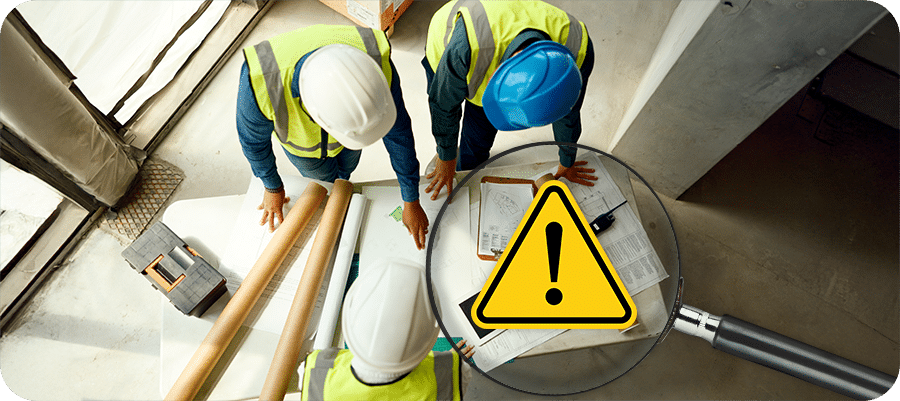
Home Blog Safety Myths And Which Ones Need to Die! Does your workplace suffer from ‘fakelore’? By RDadiz Facebook LinkedIn Some workplace safety “truths” have been passed down for years, but that doesn’t make them right. In fact, some of the most common safety beliefs are flat-out dangerous. It’s time to call them out before they get someone hurt. Here are some of the biggest myths that need to be put to bed: 1. “We’ve Always Done It This Way, and It’s Been Fine” Why it’s dangerous: Just because it worked before doesn’t mean it’s safe now. The fix: Regularly review procedures and update them based on new technology and best practices. Just because something hasn’t caused an accident yet doesn’t mean it won’t. Luck is not a safety strategy. Every shortcut taken without consequence is just stacking the odds against you. The right way to do something is the safe way, not just the way it’s always been done. This myth is especially dangerous because it resists change. New technology, updated regulations, and evolving best practices exist for a reason. Sticking to outdated methods means ignoring safer, more efficient ways to work. It’s only a matter of time before that “tried and true” approach fails in a catastrophic way. “People with [differing] attitudes or inexperience think they can cut corners, but it will catch up with them eventually. It’s just like running stop signs, you might get away with it for a while, but sooner or later, disaster strikes.” Robin Postnikoff 2. “More PPE Means More Safety” Why it’s dangerous: Too much PPE can reduce mobility and create new hazards. The fix: Use the hierarchy of controls, eliminate hazards first, then rely on PPE as a last line of defense. PPE is essential, but it’s not a magic shield. Wearing thick gloves while handling tiny components can reduce grip and increase risk. Heavy gear in hot conditions can lead to heat exhaustion. Safety starts with eliminating hazards, not just piling on more protective equipment. The key is the hierarchy of controls. Remove the hazard first. Substitute safer alternatives. Install engineering or administrative controls before relying solely on PPE. Workers need the right protection, not just more protection. “Sometimes, extreme PPE requirements actually cause more problems. We had sites where tying off at two steps was mandatory, but workers were tripping over their harness cords. It wasn’t reasonable, and people got hurt because of it.” Brett Burkard 3. “A Quick Task Doesn’t Need Full Safety Precautions” Why it’s dangerous: Accidents happen in seconds, especially when rushing. The fix: Treat every task, no matter how small, as an opportunity to follow proper safety procedures. The worst accidents happen when people skip safety steps “just for a second.” It only takes a moment for a fall, a fire, or an amputation to happen. No job is too small for safety. Related read: Do you own a business in the insurance industry? Check out how Artificial Intelligence is transforming the insurance industry. “Every rule has been written in blood. People don’t take things seriously until someone gets hurt or a company gets sued. That’s why we drill safety into training, it has to stick before something bad happens.” Robin Postnikoff 4. “If It’s Not an Injury, It’s Not a Big Deal” Why it’s dangerous: Near misses are warnings that something is wrong. The fix: Investigate and correct all near misses before they turn into serious accidents. Near misses are flashing warning signs. Ignoring them guarantees that next time, someone will get hurt. Treat close calls like actual incidents, investigate, correct, and learn from them. In industries like construction and manufacturing, near misses are often precursors to severe accidents. A worker who trips but doesn’t fall today might break a leg tomorrow. A machine that jams without consequence today might lead to an amputation next week. Reporting and addressing near misses prevent tragedies. 5. “Good Workers Don’t Need Safety Training” Why it’s dangerous: Experience can lead to overconfidence and complacency. The fix: Make regular safety training mandatory for all employees, no matter their experience level. Experience doesn’t make anyone invincible. In fact, veteran workers are often the ones who get complacent. Training isn’t just for rookies, it’s for everyone, all the time. “I don’t care if you have a master’s degree in safety. If you don’t have the experience, the network, and the mindset to keep learning, you’re not going to be a good safety person. Training is never just a ‘one and done.” Kevin Swinden 6. “Slower Work Is Safer Work” Why it’s dangerous: Moving too slowly can cause inefficiencies and increase risk. The fix: Focus on smart work, trained, controlled, and precise, rather than just slow work. Rushing is dangerous, but moving at a crawl isn’t the answer either. Safety is about working smart, not just slow. Proper training and good procedures allow workers to be both safe and efficient. Think about high-risk jobs like firefighting or emergency response. Speed is necessary, but it’s trained, controlled, and precise. The same applies to workplaces. Efficiency and safety go hand in hand when workers follow procedures correctly. 7. “Only High-Risk Jobs Require Safety” Why it’s dangerous: Every workplace has risks, even offices. The fix: Promote workplace-wide safety initiatives. That includes ergonomics, mental health, and general hazard awareness. Office workers don’t wear hard hats, but that doesn’t mean they’re risk-free. Ergonomics, air quality, mental health, and electrical hazards all pose serious threats in lower-risk jobs. Safety applies everywhere. “Workplace safety is expanding beyond just physical hazards. We’re seeing a shift in how mental well-being is incorporated into safety culture, and that’s a game-changer.” Lisa Rantucci 8. “Accidents Just Happen” Why it’s dangerous: Almost all workplace accidents are preventable. The fix: Build a proactive safety culture where workers feel responsible for identifying and addressing hazards. No, they don’t. Almost every workplace accident is preventable. Ignoring risks, skipping procedures, and relying on luck is a choice, and it’s a bad one. “I’ve seen companies turn their


